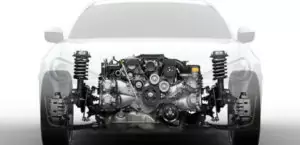1.8-liter Mitsubishi 4G67 gasoline engine was produced only from 1989 to 1992 and was installed on the sixth generation of such popular models as the Lancer, Colt and Galant. Further, this motor continued its career on Hyundai cars under its G4CN index.
The 4G6 family also includes engines: 4G61, 4G62, 4G63, 4G63T, 4G64 and 4G69.
The engine was installed on:
- Mitsubishi Colt C50 in 1989 – 1992;
- Mitsubishi Lancer CA in 1989 – 1992;
- Mitsubishi Galant E30 in 1989 – 1992;
- Hyundai Lantra 1 (J1) in 1992 – 1995;
- Hyundai Sonata 3 (Y3) in 1993 – 1998.
Specifications
| Production years | 1989-1992 |
| Displacement, cc | 1836 |
| Fuel system | injector |
| Power output, hp | 135 |
| Torque output, Nm | 159 |
| Cylinder block | cast iron R4 |
| Block head | aluminum 16v |
| Cylinder bore, mm | 81.5 |
| Piston stroke, mm | 88 |
| Compression ratio | 9.2 |
| Features | DOHC |
| Hydraulic lifters | yes |
| Timing drive | belt |
| Phase regulator | no |
| Turbocharging | no |
| Recommended engine oil | 5W-30 |
| Engine oil capacity, liter | 4.0 |
| Fuel type | petrol |
| Euro standards | EURO 2 |
| Fuel consumption, L/100 km (for Mitsubishi Lancer 1990) — city — highway — combined |
10.4 6.2 8.0 |
| Engine lifespan, km | ~350 000 |
| Weight, kg | 170 |
Disadvantages of the Mitsubishi 4G67 engine
- The most famous problem of this unit is the breakage of the balancer shaft belt;
- Belt fragments often fall under the timing belt, it breaks and bends the valves in the engine;
- Impurities in the lubricant cause not only a wedge of balancers, but also hydraulic lifters;
- Vibrations of the balancer shafts have a negative impact on the life of the engine mounts;
- Another common failure is floating speed due to dirt on the throttle.







Can the 4g67 engine turbo without any problems
Yes, it can…However, it is advisable to change your internals to something stronger…